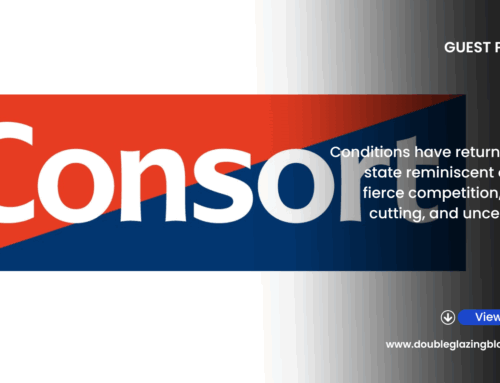UK fenestration is about to go through a rough patch. I know what you’re thinking, aren’t we already going through it?!
To some extent yes. But the some of the effects of the shortages that have been reported for a while are only going now going to be felt to a higher degree within the supply chain. It means the sector is going to go through a significant period of disruption.
It’s coming. Indeed, it’s already happening. So here’s what we think we can expect and how to deal with it.
Fenestration in flux
If you’re hoping this period of disruption in the fenestration industry is going to end soon, I don’t have good news for you. Glass shortages are due to get worse before they get better. More resin shortages are predicted by August. There are major ports shut once again in China. Container shipping costs are at record highs. Labour shortages are biting hard. I think pretty much anything that could work against us as a sector is.
But we kind of already know this. It’s the core of all conversation every week. Much of what is causing it is out of our control. So to be more productive during this period it is better to acknowledge what is happening, flow with it as best you can and make arrangements in your business to allow for disruption to take place whilst causing minimal problems for you.
I appreciate that is easier said than done. But there are some things all businesses can be doing to help protect against fenestration disruption. For installers, look at allowing yourselves some slack within your fitting schedules. Only confirm dates when you get products in stock, and explain to customers that you can only give provisional fitting dates right now, and only when their products arrive in stock will that provisional date be confirmed.
For fabricators, almost do the same. The state of deliveries up and down the supply chain are not in great shape, so it’s easy to fall prey to disruption if a delivery you’re expecting does not arrive. It affects the fabricator which in turn affects the installers. Allow more time. Confirm delivery dates to installers only when the product is on the shelf. Communicate by whatever means you feel is most effective to installers so they understand the situation.
The biggest disruptions to fenestration are going to be from the glass sector. With two major float lines down in the UK, with only one fully working, and the one glass company making glass putting people on allocation, there is going to be a severe shortage that we’re going to have to work our way through. Imports are not going to be enough, and hauliers are warning of shortages of drivers. We’re already seeing the effects of this now, but it is forecast to get worse during the second half of the year.
It’s going to be a very tough H2 for our sector. The public are not letting up on the spending, so we can’t hope for a slowdown to save us.
How to manage the situation
At all levels of the supply chain, from systems company to installer and everything in between, the key is to allow flexibility in your entire schedule. The days of being able to operate a tight delivery or fitting schedule are gone for a while. Instead, factor in a week or two for deliveries and installations. This allows for delays, which are coming more often, or missing items or products, which again are becoming more regular.
Installers need to allow for some movement in fitting schedules. A last-minute delay of a delivery could leave fitters with no work, even though there are months of work on the order book. It’s not ideal. But attempting to stick to rigid scheduling when even deliveries at this point cannot be guaranteed makes the usual way of organising work almost impossible.
Next is communication. It’s been said a lot, that the industry has to communicate down the supply chain to make sure everyone understands what the situation is. But more has to be done to make the public understand what our current issues are so that their own expectations are managed. It’s clear from the appointments I am going on that there is still a large portion of the public who thinks they can still get new windows and doors fitted in 4-6 weeks. That hasn’t been the case for a long time, and we need to do better in explaining that this is no longer possible, and also explain the reasons why. A more informed customer is a happier customer. Generally at least.
If you can, hire more people to thin the workload out. That sounds easy enough, but as you have no doubt been reading over the last few weeks, many sectors in the economy, including construction and indeed fenestration, are desperately struggling to find enough workers to fill the many roles that the industry has. Indeed, only a couple of weeks ago a report explained that UK construction needs 217,000 new workers by 2025. That’s more than 50,000 per year. There is not a chance that is happening, and that is going to result in delayed projects, restricted growth and further stress on existing workers and companies. So, if you can, hire who you need and grow sustainably.
Most considered estimates now suggest that high levels of demand will last well into 2022. One systems company believes we could be in this for three years, which makes me think all manner of things. So strap in, extend those lead times, hire who you can and keep communication channels open and clear. This is about managing the situation as best we can.
To get weekly updates from DGB sent to your inbox, enter your email address in the space below to subscribe:
By subscribing you agree to DGB sending you weekly email updates with all published content on this website, as well as any major updates to the services being run on DGB. Your data is never passed on to third parties or used by external advertising companies. Your data is protected and stored on secure servers run by Fivenines UK Ltd.






